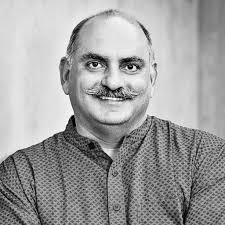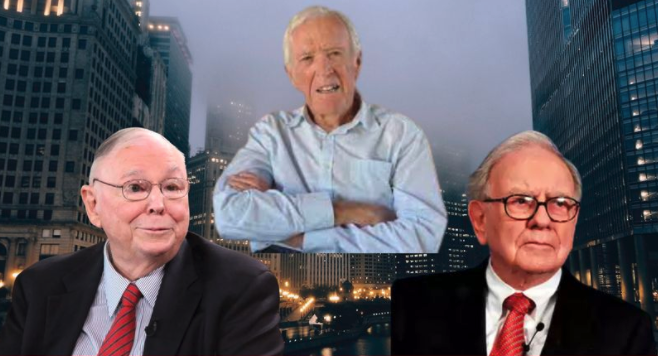
There are a million ways to get wealthy, and plenty of books on how to do so. But there’s only one way to stay wealthy: some combination of frugality and paranoia.

Let’s begin with a quick story about two investors, neither of whom knew the other, but whose paths crossed in an interesting way almost a century ago. Jesse Livermore was the greatest stock market trader of his day. Born in 1877, he became a professional trader before most people knew you could do such a thing. By age 30 he was worth the inflation-adjusted equivalent of $100 million. By 1929 Jesse Livermore was already one of the most well-known investors in the world. The stock market crash that year that ushered in the Great Depression cemented his legacy in history. More than a third of the stock market’s value was wiped out in an October 1929 week whose days were later named Black Monday, Black Tuesday, and Black Thursday. Livermore’s wife Dorothy feared the worst when her husband returned home on October 29th. Reports of Wall Street speculators committing suicide were spreading across New York. She and her children greeted Jesse at the door in tears, while her mother was so distraught she hid in another room, screaming. Jesse, according to biographer Tom Rubython, stood confused for a few moments before realizing what was happening. He then broke the news to 

Bernard H. Sandler, attorney of 225 Broadway, was asked yesterday morning by Mrs. Abraham Germansky of Mount Vernon to help find her husband, missing since Thursday Morning. Germansky, who is 50 years old and an east side real estate operator, was said by Sandler to have invested heavily in stocks. Sandler said he was told by Mrs. Germansky that a friend saw her husband late Thursday on Wall Street near the stock exchange. According to her informant, her husband was tearing a strip of ticker tape into bits and scattering it on the sidewalk as he walked toward Broadway. And that, as far as we know, was the end of Abraham Germansky. Here we have a contrast. The October 1929 crash made Jesse Livermore one of the richest men in the world. It ruined Abraham Germansky, perhaps taking his life. But fast-forward four years and the stories cross paths again. After his 1929 blowout Livermore, overflowing with confidence, made larger and larger bets. He wound up far over his head, in increasing amounts of debt, and eventually lost everything in the stock market. Broke and ashamed, he disappeared for two days in 1933. His wife set out to find him. “Jesse L. Livermore, the stock market operator, of 1100 Park Avenue missing and has not been seen since 3pm yesterday,” The New York Times wrote in 1933. He returned, but his path was set. Livermore eventually took his own life. The timing was different, but Germansky and Livermore shared a character trait: They were both very good at getting wealthy, and equally bad at staying wealthy. Even if “wealthy” is not a word you’d apply to yourself, the lessons from that observation apply to everyone, at all income levels. Getting money is one thing.
Keeping it is another.
If I had to summarize money success in a single word it would be “survival.” 40% of companies successful enough to become publicly traded lost effectively all of their value over time. The Forbes 400 list of richest Americans has, on average, roughly 20% turnover per decade for causes that don’t have to do with death or transferring money to another family member. Capitalism is hard. But part of the reason this happens is because getting money and keeping money are two different skills. Getting money requires taking risks, being optimistic, and putting yourself out there. But keeping money requires the opposite of taking risk. It requires humility, and fear that what you’ve made can be taken away from you just as fast. It requires frugality and an acceptance that at least some of what you’ve made is attributable to luck, so past success can’t be relied upon to repeat indefinitely.
Michael Moritz, the billionaire head of Sequoia Capital, was asked by Charlie Rose why Sequoia was so successful. Moritz mentioned longevity, noting that some VC firms succeed for five or ten years, but Sequoia has prospered for four decades. Rose asked why that was: Moritz: I think we’ve always been afraid of going out of business.


 1. More than I want big returns, I want to be financially unbreakable. And if I’m unbreakable I actually think I’ll get the biggest returns, because I’ll be able to stick around long enough for compounding to work wonders.
1. More than I want big returns, I want to be financially unbreakable. And if I’m unbreakable I actually think I’ll get the biggest returns, because I’ll be able to stick around long enough for compounding to work wonders.
No one wants to hold cash during a bull market. They want to own assets that go up a lot. You look and feel conservative holding cash during a bull market, because you become acutely aware of how much return you’re giving up by not owning the good stuff. Say cash earns 1% and stocks return 10% a year. That 9% gap will gnaw at you every day. But if that cash prevents you from having to sell your stocks during a bear market, the actual return you earned on that cash is not 1% a year—it could be many multiples of that, because preventing one desperate, ill-timed stock sale can do more for your lifetime returns than picking dozens of big-time winners. Compounding doesn’t rely on earning big returns. Merely good returns sustained uninterrupted for the longest period of time—especially in times of chaos and havoc—will always win.
2. Planning is important, but the most important part of every plan is to plan on the plan not going according to plan.
What’s the saying? You plan, God laughs. Financial and investment planning are critical, because they let you know whether your current actions are within the realm of reasonable. But few plans of any kind survive their first encounter with the real world. If you’re projecting your income, savings rate, and market returns over the next 20 years, think about all the big stuff that’s happened in the last 20 years that no one could have foreseen: September 11th, a housing boom and bust that caused nearly 10 million Americans to lose their homes, a financial crisis that caused almost nine million to lose their jobs, a record-breaking stock-market rally that ensued, and a coronavirus that shakes the world as I write this.
A plan is only useful if it can survive reality. And a future filled with unknowns is everyone’s reality. A good plan doesn’t pretend this weren’t true; it embraces it and emphasizes room for error. The more you need specific elements of a plan to be true, the more fragile your financial life becomes. If there’s enough room for error in your savings rate that you can say, “It’d be great if the market returns 8% a year over the next 30 years, but if it only does 4% a year I’ll still be OK,” the more valuable your plan becomes. Many bets fail not because they were wrong, but because they were mostly right in a situation that required things to be exactly right. Room for error— often called margin of safety—is one of the most underappreciated forces in finance. It comes in many forms: A frugal budget, flexible thinking, and a loose timeline—anything that lets you live happily with a range of outcomes. It’s different from being conservative. Conservative is avoiding a certain level of risk. Margin of safety is raising the odds of success at a given level of risk by increasing your chances of survival. Its magic is that the higher your margin of safety, the smaller your edge needs to be to have a favorable outcome.
3. A barbelled personality—optimistic about the future, but paranoid about what will prevent you from getting to the future—is vital.
Optimism is usually defined as a belief that things will go well. But that’s incomplete. Sensible optimism is a belief that the odds are in your favor, and over time things will balance out to a good outcome even if what happens in between is filled with misery. And in fact you know it will be filled with misery. You can be optimistic that the long-term growth trajectory is up and to the right, but equally sure that the road between now and then is filled with landmines, and always will be.
 The Great Investors Rick Guerin, Warren and Charlie…..
The Great Investors Rick Guerin, Warren and Charlie…..



